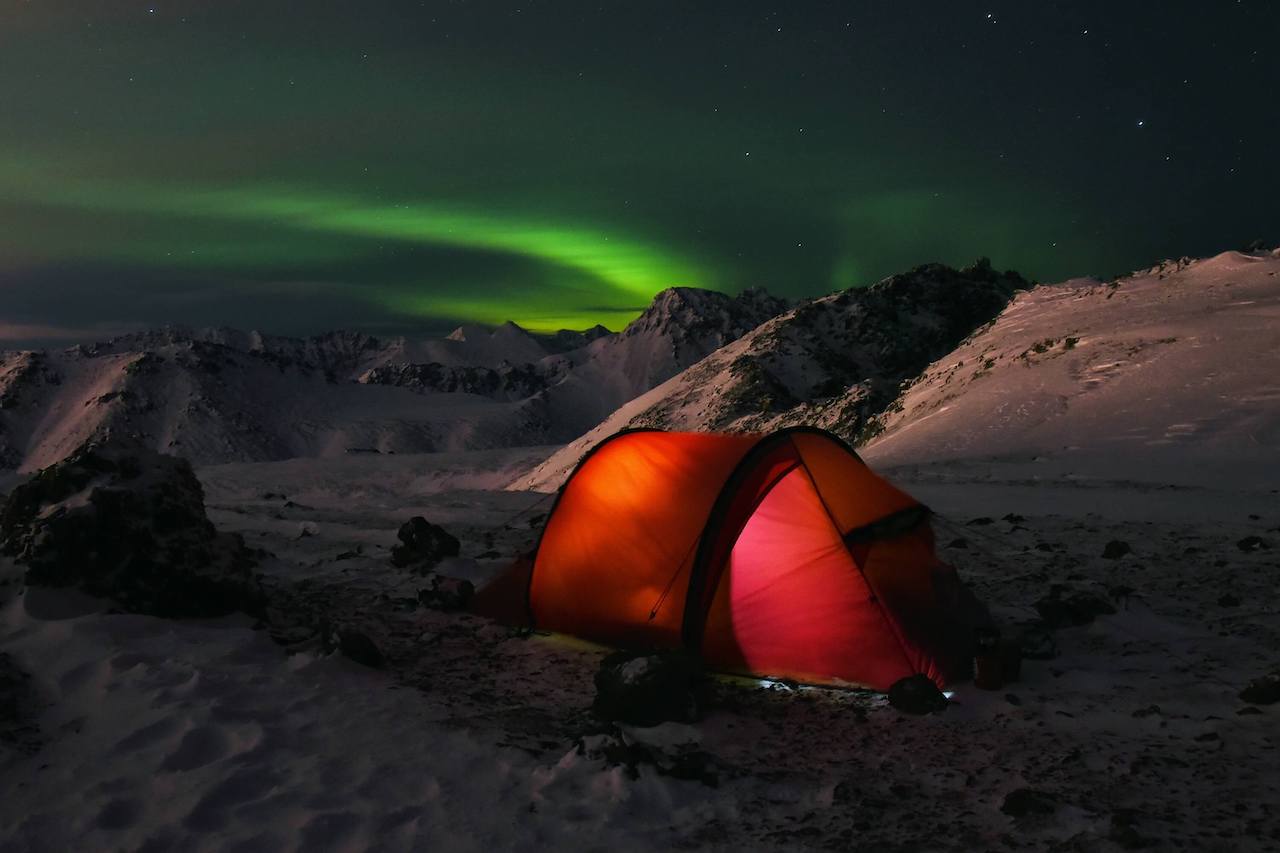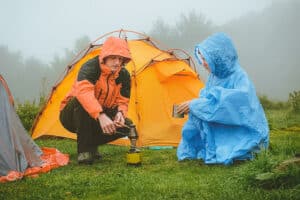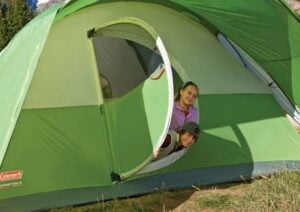The leaves have fallen, and the idea of a warm sunny day is but a memory.
But you’re not ready to put away your gear just yet, and we don’t blame you.
Winter camping offers a whole new experience for those up to the challenge. It can even save you a lot on fees as the demand at parks dies down.
Cold weather camping comes with its own suite of challenges – one of which is batting cold temperatures to stay warm.
It’s no fun waking up cold and shivering in any type of tent. Here are some easy ways to stay warm and cozy.
1. Choose Your Campsite Wisely
Rule #1: location, location, location.
Choosing the wrong campsite means you’ll be doing extra work from there on out to stay warm.
Remember that warm air rises and cool air sinks, so it’s best to save valley camping for the summer. At the same time, it’s often more windy at higher elevations.
Our recommendation is to pick a campsite at a moderate elevation that offers some natural protection from the wind.
2. Choose the Right Type of Tent
Once you’ve found a cozy campsite, it’s time to set up your tent.
This is your second layer of defense from the cold, so it’s an essential component to stay warm while camping.
Your best option is a four-season, water proof tent. Such a tent will give you the best starting point with insulation.
Price and size are also important factors in picking your cold-weather tent. Get ideas on what to consider when buying a tent.
A common theme in these tips will be to reduce extra space that can hold air. Air holds moisture, and moisture gets cold.
For cold-weather camping, your best bet is a small tent to reduce any excess cold air.
3. Use a Tent Safe Heater
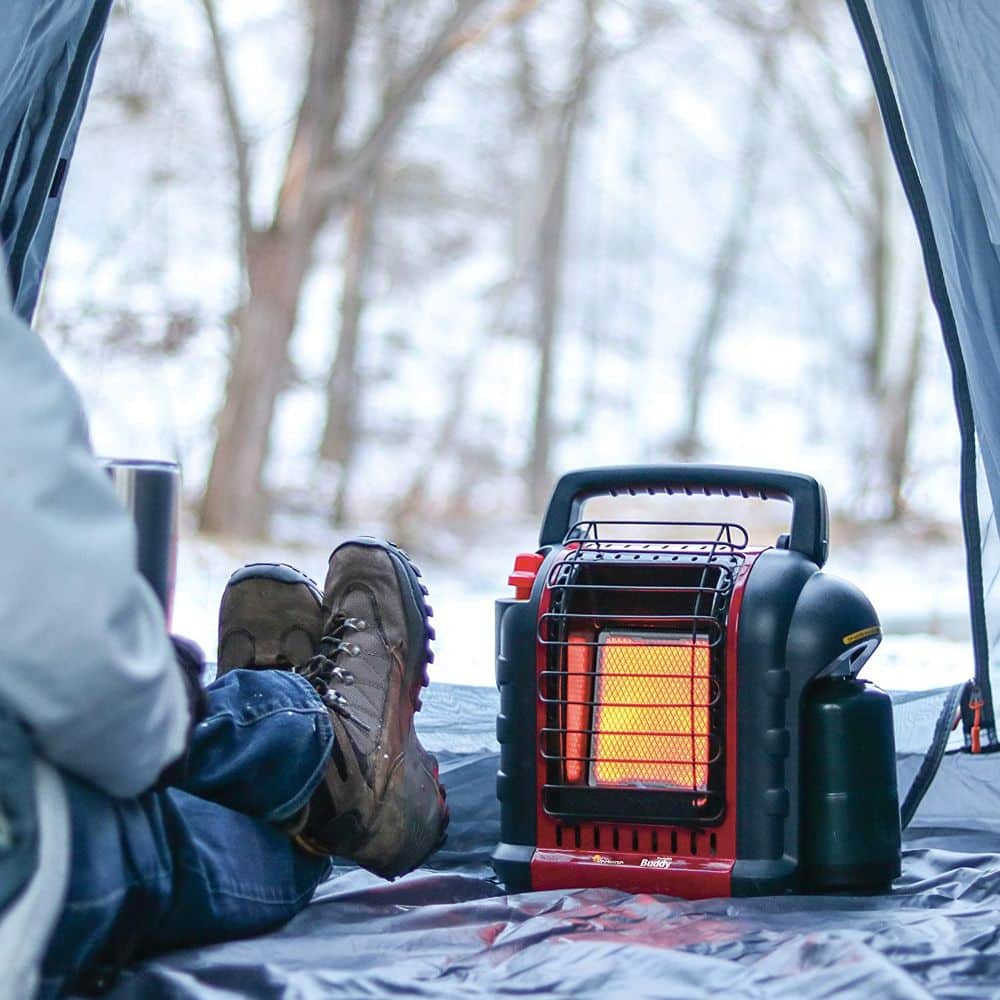
What are the worst things about a campfire?
#1 Smoke in the eyes.
#2 You can’t have one in the tent.
The next best thing is to use a tent safe heater. For ideas, check out our list of the best tent heaters.
Any use of a tent heater is at your own risk, so please familiarize yourself with the hazards (fire, carbon monoxide, etc.) and make sure to operate them safely.
4. Mylar Blankets
You’re smart. You know who else is smart? NASA.
The mylar blanket was originally designed by NASA to reflect the heat of the sun in space.
Like the sun, your body also gives off heat, and that’s heat you need to save!
By attaching a mylar blanket to the ceiling of your tent with a little bit of duct tape, you’ll drastically reduce the amount of heat lost through your tent.
And why not? They’re inexpensive, and available at most sports and outdoors stores and Amazon. Pair it with your favorite tent safe heater, and you’re in for a cozy night.
5. Keep Your Head and Feet Covered and Dry
We all know wearing socks and a hat can keep us warm, but even more important is keeping them dry.
Your waterproof boots are great at keeping snow out, but they’re also great at keeping moisture in. So after a long day of hiking, the last thing you want to do is wear the same pair of socks to bed.
Keep a dry pair of socks near your sleeping bag, and never bundle up without them. Pair them with a warm hat, and you’ll be sure to have a warmer night’s sleep.
If you’re feeling adventurous, give these breathable, waterproof socks a try on your next winter camping trip.
6. Wear the Right Clothing
In our battle against moisture, an unforeseen enemy is cotton.
Cotton clothing is not effective at wicking moisture from your body.
Better alternatives include synthetic fabrics or wool. Layering is your friend.
If you start to get too warm, you can remove extra layers to help manage your temperature.
If you can’t say goodbye to cotton, make sure to wear a moisture-wicking base layer underneath, and opt for a looser-fitting, cotton thermal over layer.
7. Leave the Air Mattress at Home
Air mattresses aren’t the best choice for the comfort of a cold weather camper.
Your sleeping pad is a good chance to insulate yourself from the ground, and an air mattress won’t be the best choice.
They can hold the moisture from your breath, which we know will suck away our precious heat.
If you’ve got no better option, make sure to fill your mattress with an air pump or go with a thin, self inflating mat to optimize insulation and minimize heat loss.
8. Use a Foam Sleeping Pad
A much better alternative for cold weather camping is a foam sleeping pad.
A foam pad will provide much more insulation between you and the cold ground compared to an air mattress.
As we’ve said before, you want to avoid cotton, so try and avoid cotton sleeping pads. Not only will they retain moisture, but they’re also poor at retaining heat.
When looking for a sleeping pad, you’re likely to come across something called the “R-value”.
What is the R-value of a foam sleeping pad?
A foam pad’s R-value is the pad’s ability to resist heat transfer.
A pad with a higher R-value will do a better job of insulating you from the ground than one with a lower R-value.
In general, a pad with an R-value of 1-3 is good for summer camping, an R-value of 3-5 is a good 3-season choice, and an R-value of 5+ is great for the coldest of nights.
9. Preheat your Tent with a Campfire
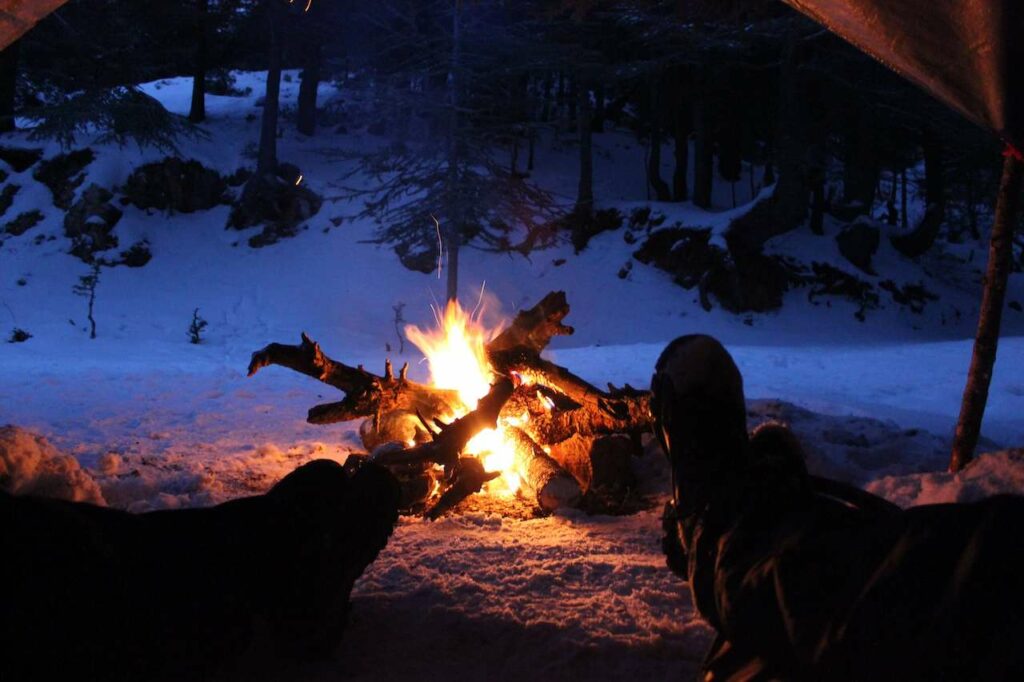
There’s nothing worse than putting out your fire, unzipping your tent, and being met with a rush of icy cold air.
Now you never want to leave a fire burning after turning in for the night, but you’d be surprised at how good a job your campfire can do “preheating” your tent while you’re wrapping up the evening.
By building your fire near your tent, it will radiate heat onto and into your tent.
Combine that with the best insulating tent to help keep that warm air inside, and you’ve got all the good beginnings to a toasty night.
10. Don’t Breathe Into Your Sleeping Bag
As tempting as it may be to want to burrow down into your sleeping bag, you might want to think twice before doing so.
We’ve talked about avoiding air mattresses that can hold excess moisture from your breath. So it makes sense that we wouldn’t want to be breathing into our sleeping bag either.
While your breath might provide some warmth in the short term, it will lead to a build-up of moisture which will hurt you in the long run. Instead, it’s best to tighten the hood of your sleeping bag over your head and cinch it around your nose and mouth.
11. Eat Big, and Eat Late
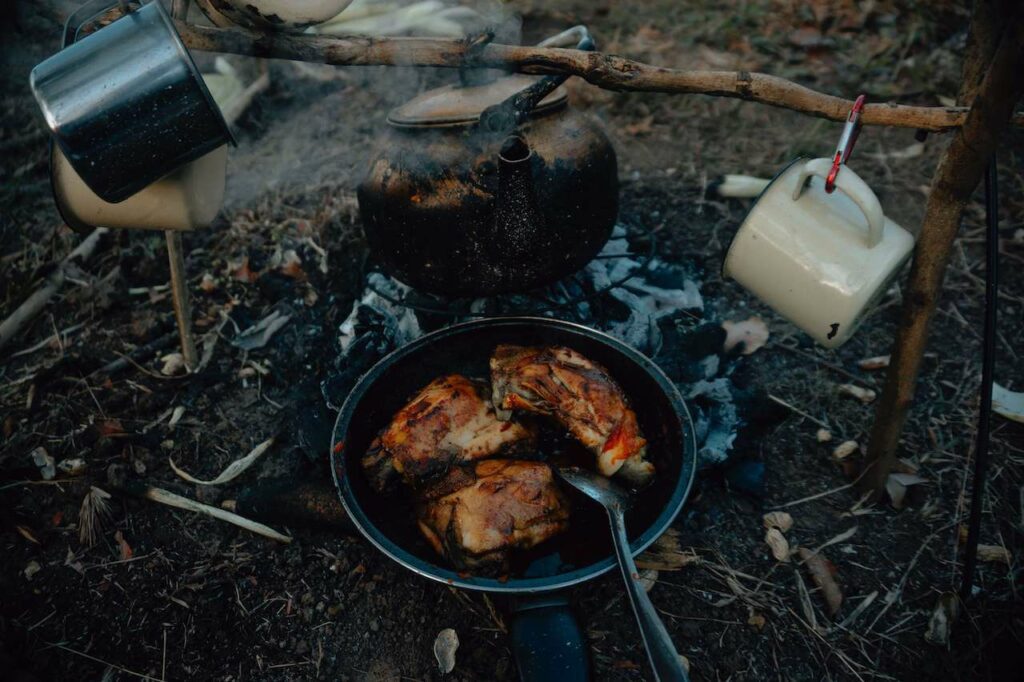
You’d be surprised how much energy it takes for your body to keep itself warm.
On average, your body needs 6,000 calories per day when hiking in the winter! Eating a big meal later in the evening can help make sure your body has the energy it needs to keep itself warm throughout the night.
Try having a meal high in fat, which has more than twice as many calories per gram as protein or carbohydrates.
12. Drink Your Water During the Day
We’ve all been there before—It’s a hot summer day. You’re coming back after a long day on the trails drinking some wonderful, amazing, ice-cold water to quench your thirst and cool you down.
Now snap back to reality. You’re up a mountain on a cold night leaning 2 inches over the fire doing everything you can to stay warm.
The worst thing you could do at this moment is drink any water! Instead, stay hydrated during the day when your body is moving and generating heat.
13. Don’t Hold Your Pee at Night
We’re gonna double down on the theory that drinking water is bad for staying warm.
Water is pretty great at transferring heat. When you’ve got a bladder full of it, it’s constantly sinking heat away from your body.
So while it’s not any fun getting out of your warm sleeping bag, when nature calls, it’s best to get up and deal with it sooner rather than later.
It’s also worth keeping a dedicated pee bottle for your business in your tent so you don’t have to step out into the elements (which would also let in a bunch of cold air!).
14. Hot Water [Bottle] Heater
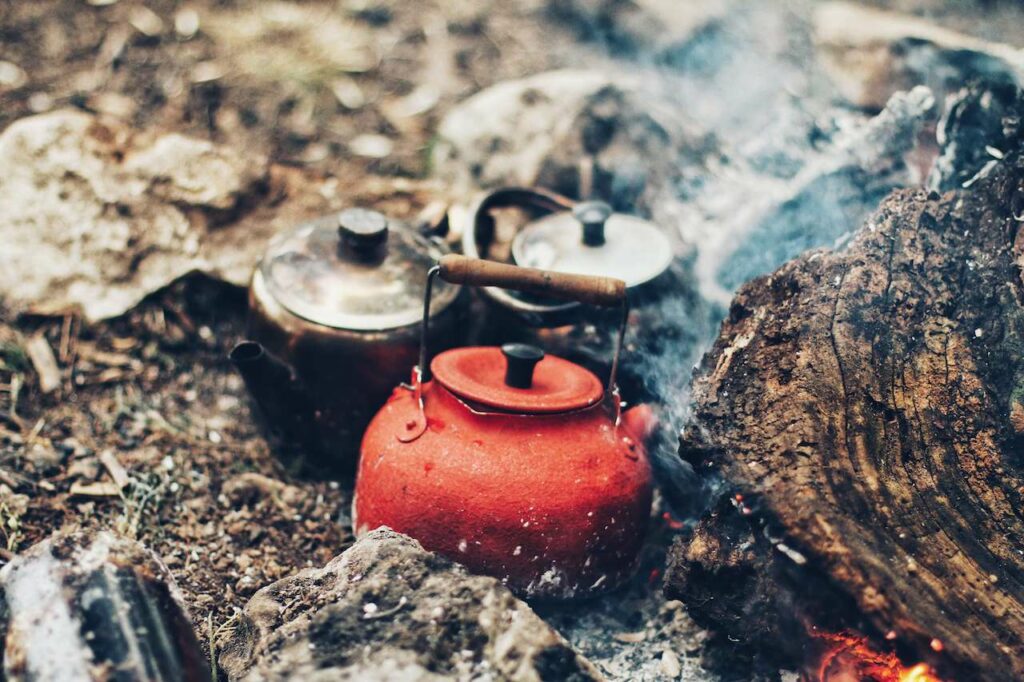
Now, water isn’t all bad. If you use it to your advantage it can be a great tool, because as good as it is at sinking heat, it’s just as good at retaining heat.
Try filling an uninsulated water bottle with warm water and putting it next to one of your body’s main points of blood circulation.
Your core, inner thigh, and neck are all good places.
Your body will naturally circulate that warmth all over your body – right down to your cold little toes.
15. Hot Rocks
Another great DIY tent heater is rocks heated by the campfire. Collect a few palm-able rocks and place them near your campfire.
Allow them to soak up heat for a good hour, then pull them away to cool. Once the stones are cool enough to handle, you’ve got a couple of options.
Option one is to wrap them in a towel and pack them into your sleeping bag. Similar to the hot water bottle, place the stones near one of your body’s main points of blood circulation (your core, inner thigh, or neck) and you’ve got a personal sleeping bag heater.
Option two is to place the stones in the middle of your tent and let them radiate warmth throughout the tent. Combine this with a mylar blanket on the ceiling of your tent to reflect the heat, and you’ve got a pretty effective DIY tent heater.
16. Choose the Right Sleeping Bag
Another obvious, but critical component for you to stay warm in your tent is your sleeping bag.
You should have a dedicated winter sleeping bag that’s rated for freezing temperatures. Not only that, but all our other rules apply.
Keep an eye on materials and make sure your sleeping bag is made of something insulating and water repellent.
It’s also important to pick a sleeping bag that’s appropriate for your height and size that will have a comfortable yet snug fit.
17. Insulate Your Tent by Reducing Ambient Space
When you’re trying to stay warm in a tent, clutter is your friend.
Before you hit the sack, try to pack your tent with all of your camping gear. This will reduce the amount of ambient space where air can sit around and suck away heat.
18. Cuddle Up with a Loved One
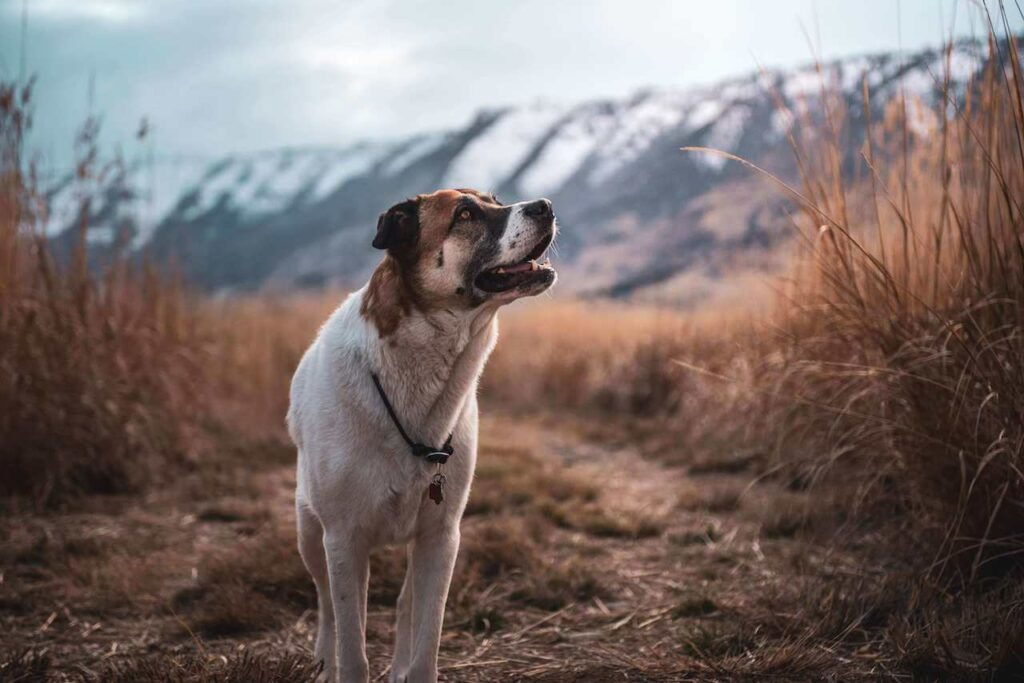
Penguins do it for a good reason.
Sleeping next to a loved one is a great way to warm up by recycling body heat. Whether it’s your partner or your puppy, stick close to one another the next time you hit the hay!
19. Fluff Your Sleeping Bag
After all day in a compression sack, your sleeping bag is about as flat as a pancake.
To improve its insulation ability, fluff it up to re-distribute its filling. It’s also a good idea to dry your sleeping bag out in the morning, either by the fire or in the sun.
That will help get rid of any bits of moisture that might be stuck inside.
20. Get Your Blood Flowing Before Bed
My last tip is to get moving! A few minutes of light exercise can make a difference in how quickly you come up to temperature.
Some squats, crunches, and push-ups will get your body temperature up and get your blood circulation up which will help your body distribute any other sources of warmth.
FAQ
How Cold is Too Cold for Tent Camping?
For most campers with amateur gear, anywhere around 30 to 40 Fahrenheit (-1 to 4 Celcius) is considered too cold for tent camping. If you go out in these temperatures, make sure you’ve got the right gear!
Somewhere between 50 to 60 Fahrenheit (10 to 16 Celcius) would be considered cold but comfortable to most.
What’s the Best Tent Heater For Camping?
When it comes to tent heaters, there’s no one-size-fits-all solution. If your campsite has electricity available, an electrical tent heater would be a good choice.
If not, you’d be better off looking for a gas powered heater, either propane or butane.
For more information, you can check out our list of the best tent heaters and pick one that suits your unique situation.
How to Stay Warm in a Tent in the Snow?
Your first line of defense against the snow is your tent, so it’s important to select one that’s well suited to the job.
A sturdy, 4-season tent should be up for the job and will be built to withstand the snow. It’s also a good idea to insulate yourself from the icy ground using a foam sleeping pad with a suitable R-value.For a list of appropriate tents, check out our list of the best cold weather tents for winter camping.
How to Stay Warm in a Tent without Electricity?
If you’re looking for an unpowered tent heater, you’ve got a few different options. A great low-cost solution is a candle lantern, which puts off a small amount of heat.
Other DIY tent heater solutions include tips 14 & 15 in our list, using a hot water bottle and/or stones heated by the fire.
The ultimate, luxury solution is a wood burning stove. For inspiration, check out our list of the best 4-season tents with a stove jack.
How to Stay Warm in a Tent in Winter?
If you’re wondering how to keep a tent warm in the winter there’s a handful of key considerations.
Having proper insulation, appropriate heating, and moisture control are all things to help you stay warm in a tent.
How do you Safely Heat a Tent?
Absolutely follow your tent heater’s manufacturer recommendations carefully. Keep flammable items, like sleeping bags, well away from tent heaters.
Also, make sure your heater is rated safe for indoor use, and if using a gas heater, ensure your tent has sufficient ventilation to avoid a buildup of carbon monoxide.
What’s the Best Tent to Keep Warm?
When you’re camping in the cold, it’s important to pack a tent that’s up for the job. Depending on the temperature of your target campsite, you’ve got a few options.
If your campsite is cold but not freezing, you might get by with a 3-season tent depending on its level of mesh and ventilation. It should offer you basic protection from rain and wind.
If snow is in the forecast, a 4-season tent is your best option. These tents are designed to protect against snow and ice buildup, high winds, and even hail.
Check out our article The Best Cold Weather Tents for Winter Camping for a list of suitable options.
Final Thoughts
That’s it! Our top 20 tips to help you stay warm in a tent on your next camping trip. I hope these tips help you get through this winter season just a little bit warmer than last.
If you’re looking for a new tent to keep you warm, be sure to check out our list of The Best Cold Weather Tents for Winter Camping.
For more inspiration on how to up your ante this winter season, take a look at The Best Tent Stoves for Winter Camping.
Stay warm, and stay safe!

